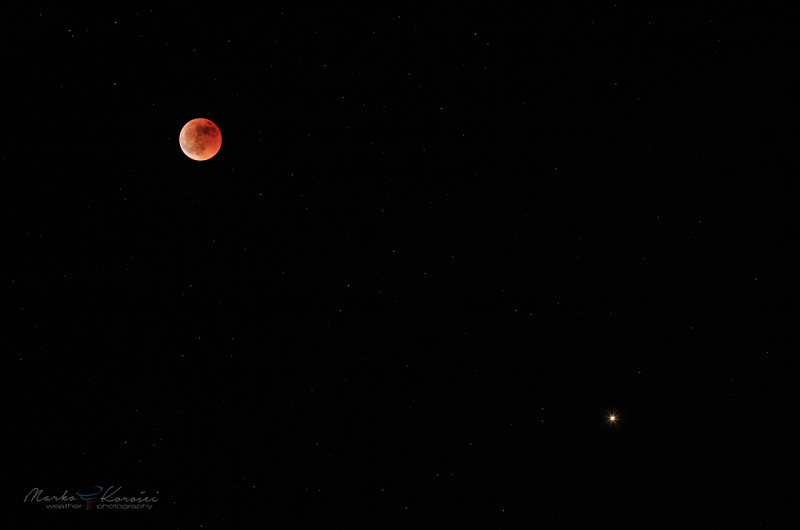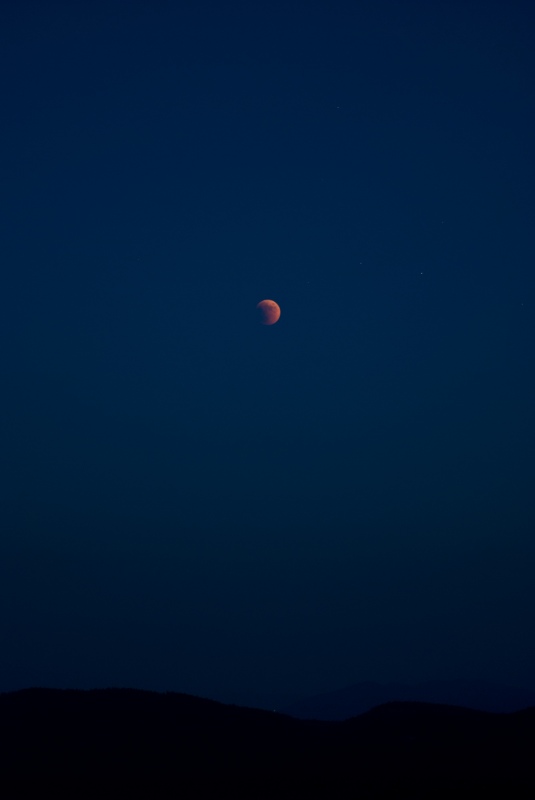A total Lunar eclipse will be visible in the morning skies from Europe on Monday morning. This will be the last total Lunar eclipse until 2021, so make it count!
The Moon will pass deep through the Earth’s shadow in the morning of January 21. Total eclipse will last for 62 minutes, with mid-eclipse at 5:16 UT (5:16 GMT, 6:16 CET). Observing conditions will be progressively better further west, as the Moon will be higher, in a darker sky. The best views – provided the sky is clear – will be from western Europe (United Kingdom, Ireland, Iceland, Scandinavia, Canary Islands), where the Moon will still be quite high in the western sky during the total phase of the eclipse. Southeastern Europe will have the poorest view, with the Moon setting during total eclipse. To see how well the eclipse will be visible from your location check the table at the end of this article.
How a Lunar eclipse happens
A total Lunar eclipse happens when the Moon passes through the Earth’s shadow. Unlike a total solar eclipse, where the Moon completely blocks out the Sun, the Moon typically remains visible while passing through the Earth’s shadow. Even though the Earth is four times the apparent size of the Sun, as seen from the Moon, some sunlight still refracts through the Earth’s atmosphere and illuminates the Moon during the eclipse. Only the evening reds are refracted through, while other colors are scattered. As seen from the Moon, the dark Earth would be surrounded by a bright red ring – the atmosphere with red color refracting through.
Total Lunar eclipse of September 28, 2015 as seen over viaduct Črni Kal, SW Slovenia. Photo: Marko Korošec.
How dark a Lunar eclipse is
During the eclipse the Moon can be a wide range of colors and brightness. There is a big variation between total Lunar eclipses: from bright orangish eclipses, where the Moon remains the brightest object in the sky, to extremely dark eclipses, when the Moon is difficult to spot with the naked eye even under dark skies, far from light pollution. The brightness depends both on the position of the Moon within the Earth’s shadow and how much light filters through the Earth’s atmosphere to illuminate the Moon. Of the Moon remains at the edge of the shadow, the eclipse is typically bright: the shadow is yellowish to orange and can even have a bluish tinge. As the Moon goes deeper into the shadow, it is typically darker, anything from orange to brick red to grayish.
There is a strong correlation between volcanic eruptions and dark eclipses: as volcanoes spew large amounts of aerosols into the atmosphere, the amount of sunlight filtering through the atmosphere is reduced, also reducing the illumination of the Moon. Indeed, the darkest recorded Lunar eclipses followed large volcanic eruptions – one of the darkest recorded eclipses happened on June 10, 1816, within a year of the great eruption of Mt Tambora, Indonesia. Very dark eclipses were also recorded in the two years after the big eruption of Krakatoa in 1883. The darkest eclipses in the 20th century happened after the eruptions of Mt Agung in 1963, El Chichon in 1982 and Mt Pinatubo in 1992 – during all of these the Moon was very dark, with some of these eclipses called “black eclipses”.
There is also a correlation between the darkness of Lunar eclipses and solar activity. Lunar eclipses close to the solar minimum tend to be darker than those close to solar maximum. So while volcanic activity has been comparatively low, we are close to the solar minimum – will this eclipse be very dark?
Moon and Mars during mid-totality in the July 27. 2018 total Lunar eclipse. Photo: Marko Korošec.
The Danjon scale
There is an easy way to estimate how dark a Lunar eclipse is – with the Danjon scale. This is a 5-point scale
for estimating the appearance and brightness of the Moon during a total eclipse. The scale is defined as:
- L=0 – A very dark eclipse, Moon almost invisible, especially at mid-eclipse.
- L=1 – Dark Eclipse, grey or brownish in coloration. Details distinguishable only with difficulty.
- L=2 – Deep red or rust-colored eclipse. Very dark central shadow, while outer edge of umbra is relatively bright.
- L=3 – Brick-red eclipse. Umbral shadow usually has a bright or yellow rim.
- L=4 – Very bright copper-red or orange eclipse. Umbral shadow has a bluish, very bright rim.
During typical total Lunar eclipses the Danjon number is between 2 and 4.
Visibilty of the eclipse from other parts of the world
The eclipse will also be visible from all of North America, Central America and South America, as well as from Greenland. It will take place in the evening hours for North and Central America and early morning hours for South America and Greenland.
Good luck!
Totality in (evening) twilight during the June 15, 2011 total Lunar eclipse. Photo: Jure Atanackov.
Good luck! The next total Lunar eclipse is in 2021, so make this one count. Also check our site for weather outlooks for the eclipse.
Times of the eclipse in Europe’s capitals and some additional selected places. P1 – first contact with Lunar partial shadow (penumbra) = beginning of partial penumbral eclipse, U1 – first contact with Lunar partial shadow (penumbra) = beginning of partial penumbral eclipse, U1 – first contact with Lunar shadow (umbra) = beginning of partial umbral eclipse, U2 – second contact with Lunar shadow, the Moon is completely inside the shadow, beginning of total eclipse, Mid-eclipse – Moon at its deepest point in the shadow, U3 – third contact, the Moon begins to exit the shadow, U4 – fourth (last) contact, the Moon is clear of the shadow, P4 – the Moon exits the partial shadow (penumbra), the eclipse is over. Red numbers indicate the event is after local moonset..


